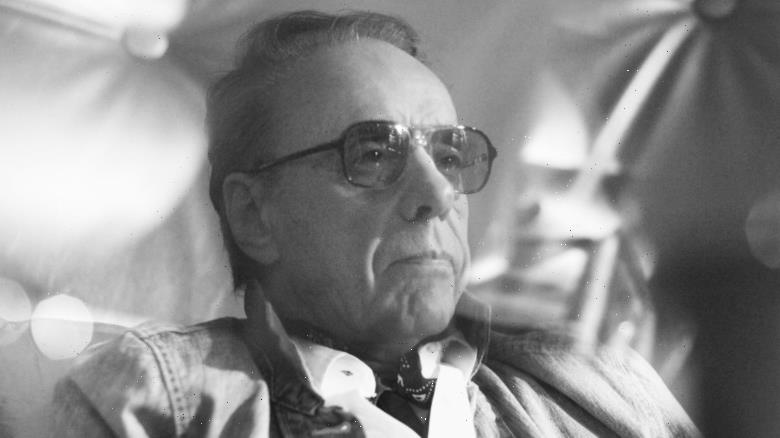Not many movie buffs have the chance to meet, let alone interview or become friendly with, their favorite moviemakers.
Peter Bogdanovich, who died January 6 at the age of 82, managed the trick many times over. First as a film scholar and magazine features writer, then as a filmmaker in his own right, Bogdanovich cozied up to the likes of directors like Ford, Hawks, and Welles, and actors like John Wayne, Cary Grant, and Jimmy Stewart, among countless others.
By some combination of luck and persistence, Bogdanovich saw to it that these men, whose movies he had seen, inhaled, and studied as a youth in New York, became his teachers, mentors, and friends.
He accomplished what had been the dream of every movie buff since before the movies talked: to get to know, in flesh and blood, those icons of the silver screen.
It was with that model in the back of my mind that I sought out a similar friendship with Peter Bogdanovich, who was the only contemporary director whose work suggested a connection to, or bore any tangible links with, those classics of the Golden Age. Given the fact that I am not in the movie business and live in Ohio, my goal was unlikely, but nonetheless my career as a film critic provided an opening: I first interviewed Peter in 2003, when I was 20, and the interviews kept piling up until we had a book, “Picturing Peter Bogdanovich,” which came out in 2020.
Bogdanovich’s films were widely misunderstood as being the work of someone who was merely emulating his heroes. To the contrary, his work simply functioned as a continuation of theirs: “The Last Picture Show” picked up the mantle of “The Magnificent Ambersons,” “What’s Up, Doc?” aimed to generate even more laughs than “Bringing Up Baby,” and “At Long Last Love” sought to revive the ingenuous charm of ‘30s musicals.
In his mature work, however, such A-to-B thinking rarely held up: Deeply personal masterpieces, including “Saint Jack,” “They All Laughed,” and “Mask” had no superficial cinematic antecedents in the way that “Doc” clearly built on “Baby,” but nonetheless flowed from the Golden Age because of Bogdanovich’s humane sensibility, peerless deep-focus photography, and crystalline cutting style.
In the 1990s, when the apathy and short-sightedness of studio bosses meant that he could ply his trade nowhere but on made-for-TV movies, I kept the faith thanks to his devotion to his craft: “To Sir, With Love II” and “A Saintly Switch” were not masterpieces, but they were staged and shot and directed with the intelligence and sensitivity of someone who had seen every minor work by Allan Dwan.
I was lucky that I got to interview my favorite filmmaker, but even luckier that my favorite filmmaker turned out to be an uncommonly decent, gentlemanly, and honorable man. I found that out when our professional relationship became a friendship.
We enthused over many of the same movies, including, especially, his; we disliked the same movies, including, candidly, many of the ones that come out nowadays. I looked forward to his emails and his distinctive sign off, “All the best, as ever.”
We spoke on the phone regularly, even when I was not interviewing him, especially during the last two years when I would call him up whenever I felt like talking about one of his films. I kept little mental lists of things to ask him about, often regarding one of his many pending movie projects or literary endeavors. I don’t know if he ever really sat back and rested on his laurels, as he deserved to; that he died without earning an Oscar, or being given an honorary one, is a travesty.
He called, too; when Turner Classic Movies screened his 1993 film “The Thing Called Love” last fall, he wanted to know if I’d seen the airing and, if so, whether they used the director’s cut. My answering machine is filled with messages I will never now delete: “Peter, it’s Peter — the other Peter” and all that.
He told me once, this past year, that he had not been feeling well and had spent the day rereading my book on him. He seemed to really like it. How many authors can say their subject told them such a thing? Whenever I would write about a classic film — not his, but those of others — I tried to find a way to reference one of Peter’s interviews with the giants; it was my way of keeping his name in the press, in a good way.
Three days before Christmas, I called him one last time. We talked about a movie he was planning to make — a biographical portrait of George and Ira Gershwin — and I asked him if he had seen the rare Lubitsch short films TCM had just aired. He hadn’t; he said he especially regretted missing Lubitsch’s first American film, which he told me he had never seen. But there was time — and time to make the Gershwin movie, and to make “Wait For Me,” his dream project about a moviemaker beset by ghosts.
“All right, love—take care,” he said at the end. (He used terms like “love” and “darling” more freely than anyone I have ever known.)
“Let’s talk again sometime soon,” I said.
“I always appreciate you calling,” he said.
Peter was a hero worth worshiping.
Peter Tonguette, who regularly contributes to The Wall Street Journal, The Christian Science Monitor, National Review and other publications, is the author of “Picturing Peter Bogdanovich: My Conversations with the New Hollywood Director” and the editor of “Peter Bogdanovich: Interviews.”
Source: Read Full Article
